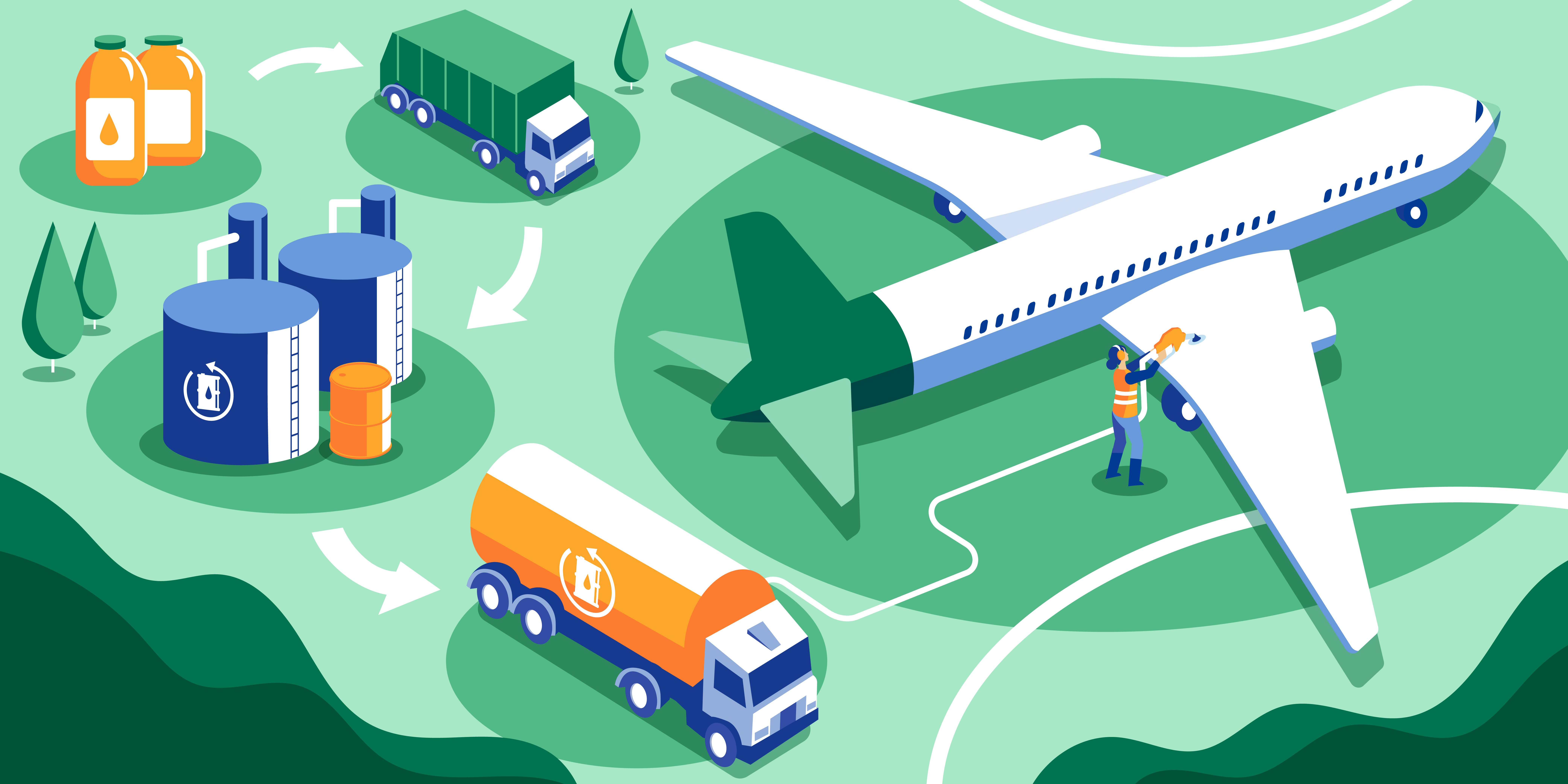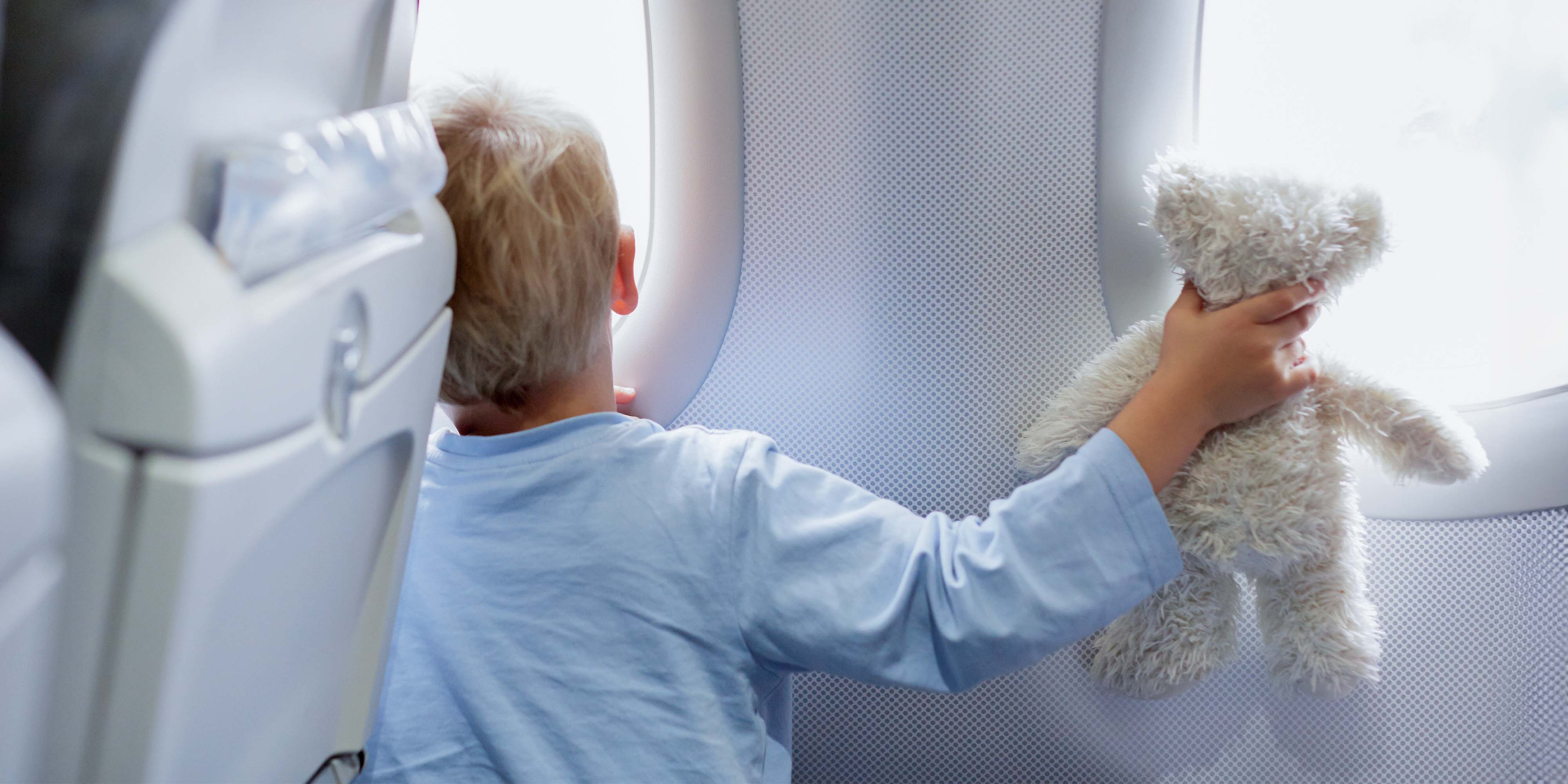
Aviation
10 minute read
Future of aviation, COVID-19 and the promise of sustainability
The aviation industry has been hit hard by the COVID-19 pandemic, bringing the century-old industry to a near-halt. With sustainability as a guiding principle coupled with ambitious net-zero emissions goals, many questions remain unanswered. Will the industry bounce back? What will innovation look like? The following explores the many challenges - and opportunities - the aviation industry is facing in its quest for a sustainable future.
Expect to learn:
How airlines are faring in the face of unprecedented challenges
What new innovations we can expect to see in the coming years
How the industry is being decarbonized and how Sustainable Aviation Fuel (SAF) is changing our perception of aviation
How governments can facilitate growth in sustainable aviation
Since we published The future of aviation: the next 100 years, the world has gone through drastic changes. The COVID-19 pandemic has brought air travel to a near-standstill, with people and numerous industries globally bearing the brunt of the new normal. IATA’s air traffic stats showed year-on-year passenger demand plunge by 94.3% in April 2020. Spurred on by the changing reality, we intensified our efforts to better understand how the global aviation industry is tackling the new, unprecedented challenges posed by COVID-19, and what the industry is doing in terms of its commitment to net-zero emissions air travel.
Fly like it’s 1999?
'The aerospace industry is arguably one of the most innovative sectors in the world and has witnessed incredible growth since commercial flying became commonplace in the second half of the 20th century. Along the way, aviation’s impact on the environment has become an area of increased focus, with countries and organizations launching major initiatives such as CORSIA, the International Civil Aviation Organization’s initiative to stop the growth in aviation’s net CO2 emissions from 2020 onwards.
Aviation faced its biggest Black Swan event in the past year as reported in the global aviation data firm Cirium’s Airline Insights Review 2020 report.
The findings, stark yet unsurprising in retrospect, showed how devastating COVID-19 pandemic has been for the aviation industry: 21 years of global passenger traffic growth was wiped out in a matter of months as air traffic in 2020 was reduced to levels last seen in 1999.
There is no denying that COVID-19 has transformed the short-term landscape of aviation, with experts saying the industry is unlikely to recover fully in the coming years.
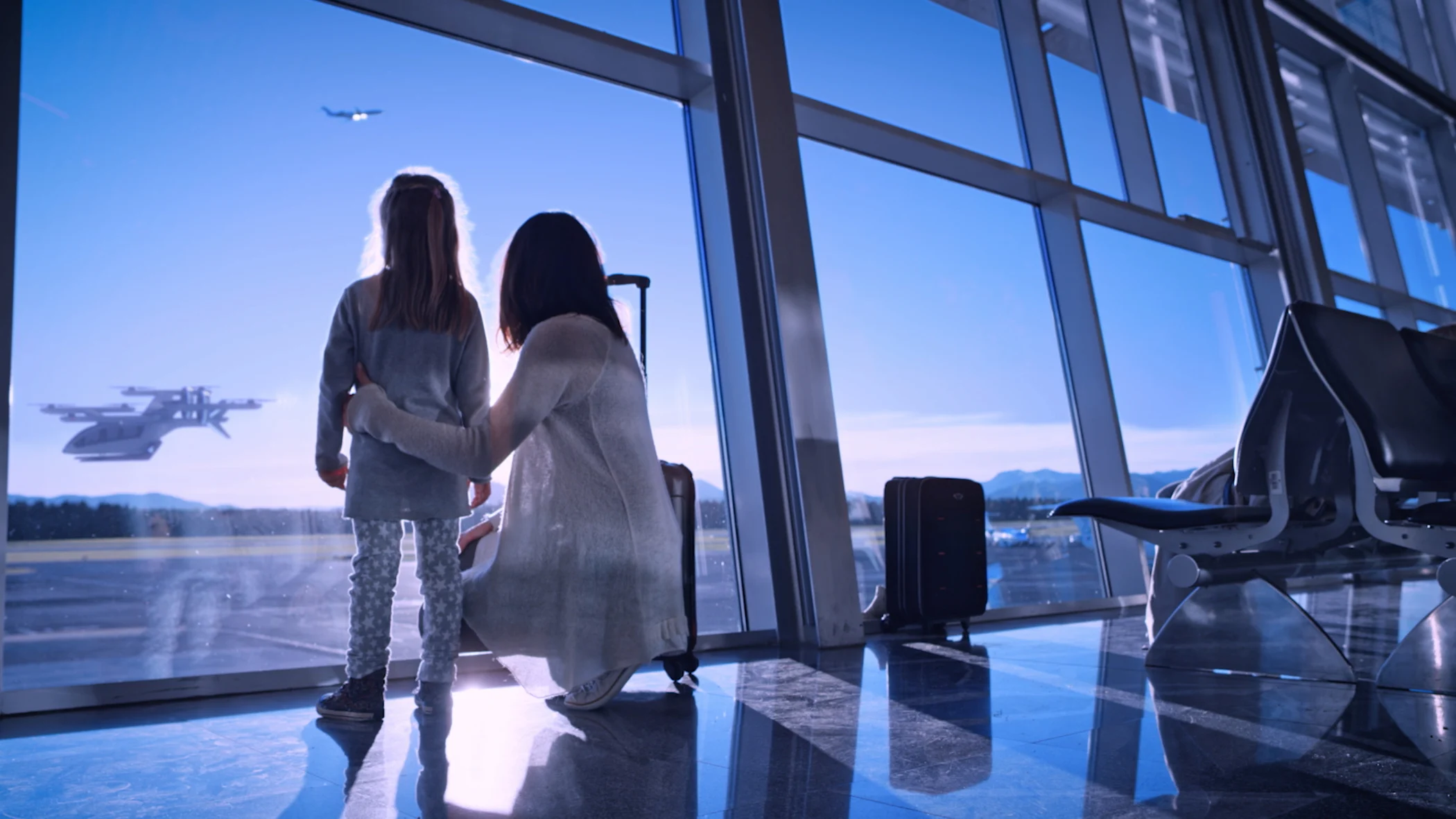
However, not all is lost. If we are to look for silver linings, the pandemic has forced both the industry and the traveling public to focus on what is truly important. Out of adversity comes opportunity and the aviation industry, like many others, shows that companies that innovate, think creatively and harness technology to take on seemingly insurmountable challenges will ultimately emerge victorious.
Indeed, the industry can accelerate its efforts to meet the net-zero emissions and sustainability goals by utilizing technologies and raw materials that are already available.
Innovation is always resilient
The aviation industry is known for its resilience. Airlines have quickly adjusted to different levels of demand, suppliers are launching new solutions to keep passengers safe and airports are investing in biometrics such as facial recognition to enable a contactless passenger journey. For example, aircraft seat supplier Safran’s post-COVID-19 travel portfolio includes padded seat wings, touchless door solutions and backrest recline pedals and Japanese aircraft supplier company Jamco’s “Project Blue Sky” initiative features aircraft cabin dividers, hands-free toilet seats and waste disposal solutions.

In addition to passenger-focused innovations, 2020 delivery figures released by aircraft manufacturer Airbus demonstrate that the airline industry is not going away without a fight. Although 34% fewer than in 2019, the company still completed 566 commercial aircraft deliveries and received hundreds of new aircraft orders. In September, Airbus revealed three concepts for the world’s first zero-emission commercial aircraft which could enter service by 2035. When it comes to utopian-seeming inventions such as flying taxis, progress is also being made. Munich-based vertical take-off and landing jet aircraft developer Lilium is expanding by opening its first US location and expects its jets to be fully operational and available to the public by 2025. What’s more, aircraft manufacturing company Embraer’s disruptive innovation subsidiary EmbraerX announced in December that it had developed a new concept for the air taxi market in partnership with Australia’s civil air navigation service provider.
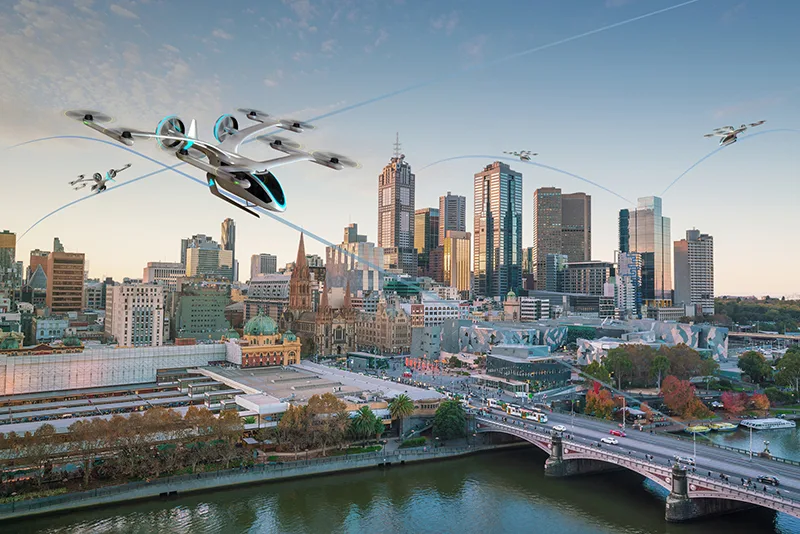
What about net-zero emissions
Leaps in technology often come with a need for increased awareness for sustainability. As leading aviation commentator John Strickland noted, “One of the biggest challenges will be to address aviation’s impact on the environment.”
But has the industry given up on the environment due to the pandemic?
No, it has not. Sustainability is still very much on the agenda for both airlines and industry suppliers.
Sebastian Mikosz, Senior Vice President for Member External Relations at IATA says the industry continues to be proactive when it comes to sustainability and its role in the future of aviation.
“We have had ambitious targets for carbon reductions for more than a decade. And despite the greatest crisis in the industry’s history, our commitment to reaching these targets is unchanged. We will not be distracted from our goal to cut CO2 to half of 2005 levels by 2050.”
Sustainable aviation fuel (SAF) remains a crucial part of IATA’s sustainability strategy and in 2020 it was reported that the milestone of 300,000 flights using SAF was hit.
“There is no evidence that airlines backed away from their SAF commitments despite the impact of the pandemic on finances. SAF already exists and we know it works – the key is investment in more capacity. 2021 will see new SAF production coming online, but governments still need to do more to incentivize producers to make more,” said Mikosz.
And how could travellers help to increase the use of SAF? One obvious answer is to include the cost of sustainable aviation fuel in ticket prices, resulting in passengers taking responsibility for their own emissions.
Sustaining and supporting change
While much of the onus of ensuring the rollout of viable, sustainable solutions is on the private sector, global governments and international organizations play a massive role in facilitating and scaling production. What is needed are binding targets for the emission reduction, offsetting is no longer enough.
European Commission has shown leadership by launching its Sustainable and Smart Mobility Strategy, setting the stage for fundamental reforms within the transport system and policies to stimulate demand for SAF.
“Many may question whether now is the right moment to do this. The crisis, indeed, had a devastating impact on the aviation sector – it has become, without any doubt, one of its major victims,” said EC’s Commissioner for Transport, Adina Vălean.
European Union has a clear role in helping create the market for SAF. When created through policy action, investments in production capacity will follow.
Now that the time has come to rebuild, Vălean says, we must see the rebuilding process as an opportunity for a change – a change that offers European industry prospects across value chains to modernize, create high-quality jobs, develop new products and services and set sights on global leadership.
Never let a crisis go to waste
In recent years, we have seen the emergence of new initiatives around decarbonization of international aviation.
According to the United Nations’ aviation agency ICAO’s Deputy Director of Environment Jane Hupe, a large number of initiatives focused on the decarbonization of international aviation have emerged. In September, ICAO heard from nearly 100 stakeholders on their ambitious plans for decarbonizing international aviation.
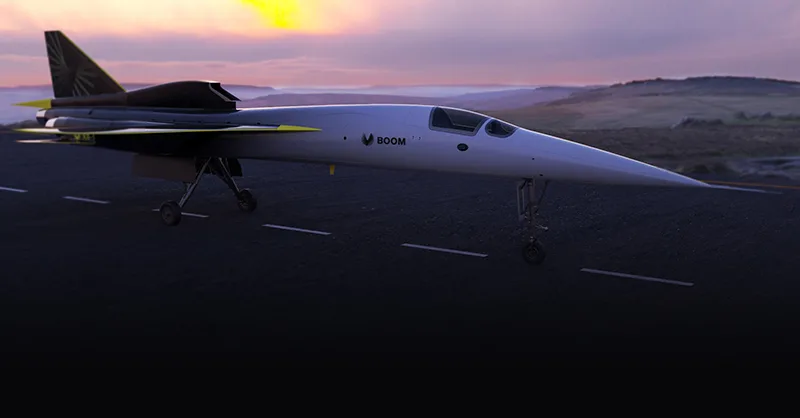
ICAO also convened the Aviation Green Recovery Seminar in November to seek potential pathways for aviation to decarbonize and to showcase how aviation could support other sectors to reduce their CO2 emissions and cope with the climate crisis.
Sustainable aviation fuel features in ICAO’s basket of measures.
In 2020, Alaska Airlines, American Airlines, JetBlue and All Nippon Airways all signed SAF supply agreements with Neste.
Doug Parker, Chairman and CEO of American Airlines, explains how the airline is working towards its goal to achieve net-zero carbon emissions by 2050.
“As a result of COVID-19, we are retiring older, less fuel-efficient aircraft even more quickly. Accelerating the commercial availability and use of SAF, which can reduce life cycle GHG emissions by up to 80% compared to conventional jet fuel, is another critical part of our long-term carbon-reduction pathway. We’ve committed to purchase nine million gallons of SAF over three years and, in parallel, are working to make our operations more fuel efficient.”
Sustainable aviation fuel (SAF) leading the way
Sami Jauhiainen, Neste’s Renewable Aviation’s Vice President of Business Development sees plenty of change ahead, specifically in the SAF market.
“In the short tem, we have significant potential to use SAF to reduce emissions by utilizing technology and raw materials that are already available. By 2030, we estimate that up to 10% of total jet fuel used globally could be SAF.”
Jauhiainen says that we need to see a rapidly expanding adoption of new technologies to further grow the potential.
“I think what we’ll see in the next 5-10 years are new technologies that utilize, for example, municipal solid waste and ligno cellulosic raw materials. In 10 years, we should also see power-to-liquid technology becoming commercialized and these will provide further potential to grow the use of sustainable aviation fuels.”
Neste has had a busy year despite the challenges. The company signed new agreements with Air bp and Shell to increase the supply of SAF globally.
Furthermore, Finnair signed an agreement in 2020 with Neste to gradually and considerably increase its use of SAF. Finnair’s VP Sustainability, Anne Larilahti says SAF is an important part of the Finnair strategy needed to reach our future carbon neutrality goals.
“The number one priority on Finnair’s sustainability agenda has been finding ways to achieve a significant reduction in our current fuel consumption levels – such as by reducing aircraft weight, flying more efficiently and planning more direct routes. However, we recognize that SAF is just as essential to achieving our future carbon neutrality goals.”
Finnair is currently flying at around 15% capacity due to the pandemic, but Larilahti says the airline expects demand to begin to recover as countries start to ease their travel restrictions.
“In addition to purchasing SAF ourselves, we will also provide our customers with the opportunity to ‘buy’ more SAF as a way of offsetting the environmental impact of their journeys.”
Neste, too, is innovating.
Jauhiainen says that Neste is building the renewable aviation business for the long-term with Covid-19 having very little impact on the company’s long term strategy.
“We have been continuing to develop supply chains and driving forward initiatives to grow SAF production whilst the market recovers.”
The company has also worked actively with the aviation industry and public authorities during the year to help shape policies and regulatory frameworks needed to scale up the production of SAF.
“We’ve been actively involved in the Clean Skies for Tomorrow coalition, coordinated by the World Economic Forum,” Jauhiainen says, noting that Neste was one of the 15 aviation stakeholders to sign a policy statement calling for the European Commission and the UK to announce a Europe-wide blending mandate for SAF in 2021, with progressively rising and ambitious but realistic target levels up to 2050.
Neste recently signed sustainable aviation fuel supply agreements with airlines in the US and Asia.
“Aviation is a global industry and climate change is a global problem. Using SAF will help the aviation industry to reduce both its GHG-Emissions and the so called Non-CO2-effects. We need frontrunner countries and regions to show an example by moving towards sustainable aviation fuels.”
Change is attainable
While change takes time and effort, the future outlook for the aviation industry is starting to take shape and gives plenty of reason for optimism. Global governments and the aviation industry are in the enviable situation of being able to take advantage of existing technologies such as sustainable aviation fuel (SAF) to pave the way to a fully decarbonized aviation industry and net-zero emissions.
In order to achieve these largely attainable yet challenging goals, governments, private sector and global institutions should work together to create the conditions for rapid deployment of new solutions in order to bounce back from the pandemic, faster and stronger, while establishing a tradition of sustainability for future generations to enjoy.
Credits: Satu Dahl, a journalist and Editor specializing in aviation. She has previously edited aviation magazine Regional International and written for several aviation publications.


